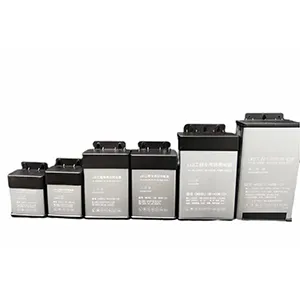Lighting has evolved far beyond its basic function of illumination. Today, it’s about energy efficiency, flexibility in design, and durability especially in commercial and architectural environments. With the steady shift towards LED technology, understanding the backbone of these systems is essential. Components like strip lights and power supplies are no longer just accessories; they’re central to modern lighting solutions.
Let’s explore how to make informed choices when navigating the world of LED components, focusing on suppliers and distributors that offer reliability and long-term performance.
Understanding the Core Components of LED Systems
LED systems are only as strong as the sum of their parts. At the heart of many setups, whether for signage, display shelves, or linear architectural designs, lie two essentials: strip lights and their power supplies.
LED strip lights offer the flexibility to fit unique layouts and design ideas. They come in different color temperatures, brightness levels, and waterproof options, making them highly versatile. However, these lights are only effective when paired with the right power supply one that ensures smooth operation without flickering or overload.
It’s the harmony between these two elements that determines how efficient and safe a lighting system truly is.
What to Look for in Reliable LED Strip Lights Suppliers
Selecting LED strip lights might seem straightforward, but there are real technical and material considerations at play. For example, poor soldering, weak PCB boards, or inconsistent chip spacing can affect not just brightness but also heat management and lifespan.
When evaluating options, it’s important to work with experienced LED Strip Lights suppliers who understand these nuances. Their expertise shows consistent quality across batches, transparency about chip brands and power ratings, and the ability to meet custom requests for size or voltage.
Moreover, trustworthy suppliers often provide detailed technical specs and test reports. This not only helps with installation but also with ensuring compatibility with existing systems or specific project requirements.
The Often Overlooked Role of a Good Power Supply
While strip lights often take center stage in lighting conversations, the power supply is equally crucial. A mismatch between the light and its driver can lead to voltage drops, flickering, overheating, or even early failure.
Think of the power supply as the foundation on which your lighting setup is built. Without a stable power source, even the best strip lights won’t perform well. Factors such as wattage output, waterproof rating, surge protection, and efficiency class (like 90% or higher) make a noticeable difference.
More importantly, power supplies also affect safety particularly in commercial or outdoor installations where fluctuations and environmental exposure are common.
Working with the Right LED Power Supply Distributor
Not every power supply distributor offers the same level of quality or insight. A knowledgeable LED Power Supply distributor will help you navigate options based on load requirements, IP ratings, voltage types (constant current or constant voltage), and application environments.
For instance, if you’re powering a long run of 24V LED strip lights in an outdoor space, a standard indoor driver won’t be sufficient. This is where a distributor’s product range and expertise make a difference ensuring your components aren’t just functional but optimized for their specific use case.
Additionally, distributors that offer warranty-backed products and adhere to safety standards like CE, RoHS, or UL listings provide a level of assurance that’s hard to overlook.
Long-Term Value: Durability, Compatibility & Efficiency
Choosing quality LED components isn’t just about performance today, it’s about cost-effectiveness over time. High-grade strip lights maintain their brightness longer and experience less color degradation. Similarly, a well-matched power supply will operate more efficiently and extend the lifespan of your entire system.
Compatibility between components is also key. Voltage mismatches, incorrect polarity, or inadequate power buffers can all contribute to premature wear and tear. By prioritizing fit and durability over cost-cutting, businesses and installers save time, reduce maintenance calls, and deliver better results to end-users.
Conclusion
Lighting is no longer a plug-and-play decision. It requires a thoughtful approach that considers how each component works within a system. Strip lights must meet performance expectations, and power supplies need to deliver stability and protection. Working with reliable partners both suppliers and distributors can simplify this complexity.
Whether you’re sourcing lighting for a storefront display or managing a multi-phase architectural installation, investing time into selecting the right products pays off. The right lighting infrastructure isn’t just about brightness it’s about reliability, efficiency, and peace of mind.




